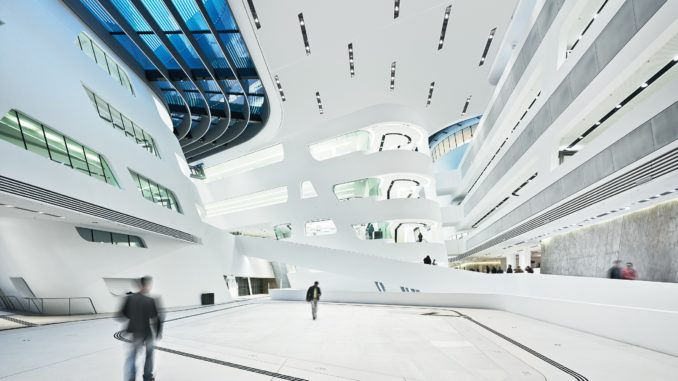
By Darren Riva, Northern European Zumtobel Group Services Director
Why upgrade your lighting? Certainly, the energy and cost-savings to be gained from today’s LED luminaires are compelling. But these figures do not tell the whole story.
Poor quality lighting can have a negative impact on employee wellbeing and productivity. Our own internal body clocks are governed by circadian rhythms, and studies point to a significant link between lighting quality and the way that these rhythms control sleep, stimulation and relaxation.
Working in a poorly lit environment can lead to lethargy and lack of concentration – not to mention the potential health and safety risks. A recent study from the American Society of Interior Design found that 68 per cent of employees complain about the lighting provision in their offices. Our own neuro-scientific study, in partnership with the acclaimed Gruppe Nymphenburg, revealed that working in an environment where lighting can be adapted in terms of colour and intensity resulted in lower heart rates, calmer brain activity and less physical tension.
This is why leading businesses across many sectors are partnering with lighting specialists in order to create environments that are safe, efficient and geared towards productivity and optimal employee performance.
Daylight is the original light source, connecting with people through an elementary relationship and shaping human behaviour since the dawn of time. It may not necessarily be visible or even noticeable, but light defines how we experience the world through its many delicate qualities, such as light colours, shadows, contrasting intensities and changing directions. However, today people in industrialised countries spend around 80 per cent of the day inside – with reduced exposure to the essential dynamics of natural light. Office lighting still tends to deliver a largely static brightness – even in communication areas and creative zones.
With nature as its template, lighting technology innovation in recent years has made major strides in terms of generation, distribution and control, greatly expanding the raft of possibilities offered by artificial lighting design. Traditional limitations are being rejected in favour of lighting that can be controlled and adapted during the day to factors such as time, purpose of task, number of individuals present and more.
As lighting solutions become evermore sophisticated, so the value of third-party expert consultancy grows. The importance of the right lighting cannot be overplayed. We worked with a nursing home in Vienna to establish the correct light levels and colour temperature. Colour temperature has a proven effect on mood, and by adjusting its lighting the nursing home has reported an increase in the level of sociability between residents and a decrease in the amount of drugs issued.
Smart lighting is also serving as the conduit through which business intelligence is captured. In this respect, lighting has one major advantage – it is everywhere that people are. LED lighting can act as a platform to deliver a wide variety of intelligent applications and improved functionality. Whilst this presents businesses with myriad options it also demands a change of mindset. Business leaders must recognise the emergence of lighting provision as an essential element of business strategy rather than a legacy service.
Intelligent systems can sense when space is occupied, providing invaluable data on building usage, footfall, and under-occupied space. Indeed, this intelligence has moved beyond the boundaries of the office or work environment to now be used city-wide by authorities across the globe. Street lighting is capturing data on pollution, traffic-flow, sound levels and more, and sensors trigger lighting in side-streets and cycle paths to provide a safer, more welcoming environment for citizens.
The days of businesses being held to ransom over legacy lighting service contracts are over. Lighting as a service moves lighting provision to a true partnership where the performance of the lighting solution is managed by experts over its lifetime. Lighting should not be a static, ‘once and done’ solution. Numerous factors affect the requirement for light on any given day – the weather, the time of day, the type of business being conducted. Flexible, intelligent lighting is providing businesses with the tailored solutions that they crave and even shaping how our cities function and evolve.
The onus is on decision-makers to understand current needs but to also project forward so that lighting installed today can deliver insight and value for years to come. Illuminated thinking is saving energy, cutting costs, and providing employees and citizens with environments that drive productivity and promote wellbeing. Businesses across every sector are switching on to the possibilities.

Be the first to comment